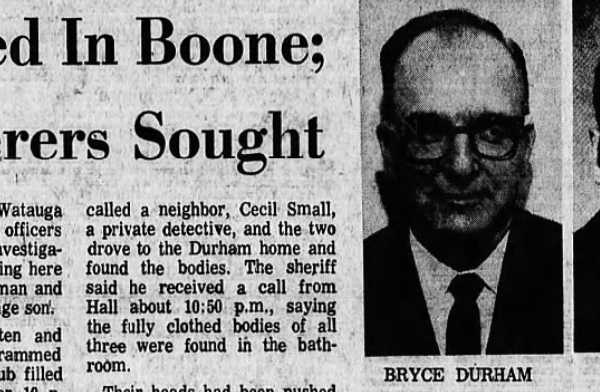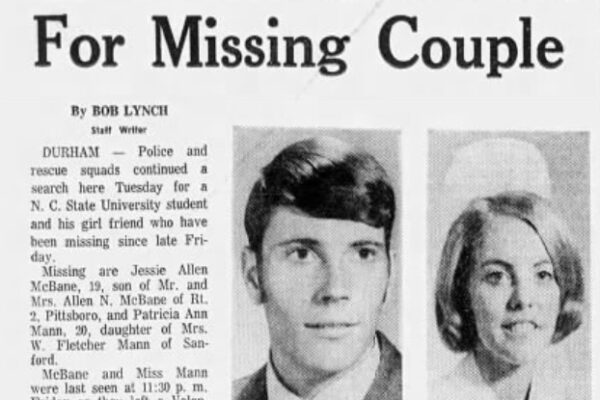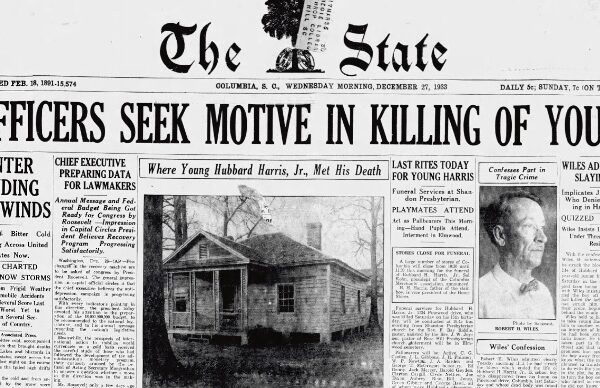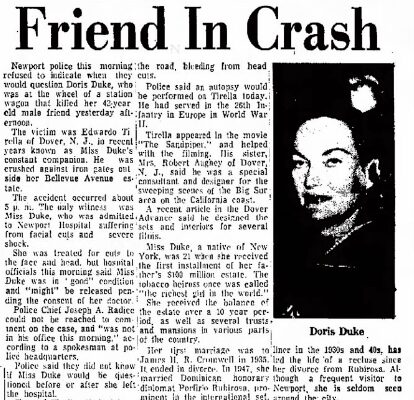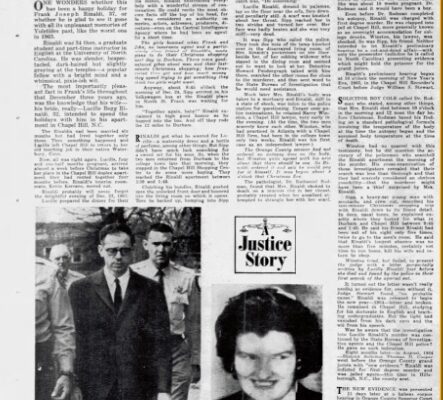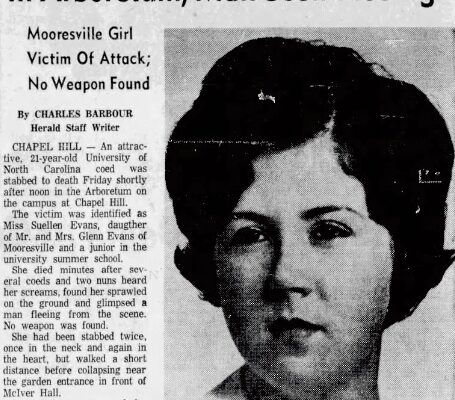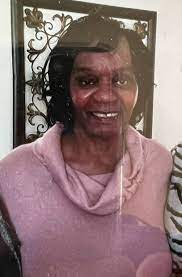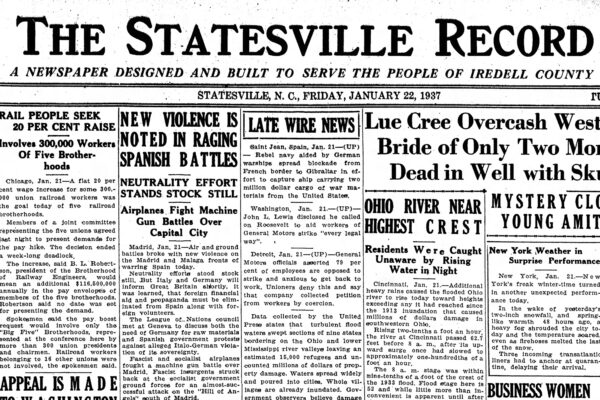In Episode 73, I compiled several different stories that featured missing persons from the Carolinas that involved Alzheimer’s disease or dementia. This included 68-year-old Young Chang, who went missing from the Mount Pisgah Care Home in Candler, North Carolina in 2004. He had only just moved into the home from Atlanta, Georgia when he left the facility on foot, and he has never been found. Heddie Dawkins was an 81-year-old woman who left her daughter’s High Point home in the middle of the night in 2022. The community immediately put together searches, but she was found deceased about a week later, about a mile from the home she had left. In Episode 18, I shared the story of missing runner Rick Travis, a 66-year-old man who went missing after heading out on a routine run in Spencer, North Carolina. Unfortunately, he had recently been diagnosed with a cognitive dysfunction and memory loss. He was found a year later, deceased, an unfortunate victim of circumstance who was only trying to hold onto this normal, everyday routines as long as he could.
This week I want to talk about another similar story I came across from the early 90s, but this one is more unusual because it was eventually tied to a Jane Doe case from Virginia. It also highlights the generous and compassionate spirit of one community determined to give an unidentified woman the funeral she deserved.
Mabel Seymour
In mid-December of 1991, an 84-year-old woman named Mabel Seymour walked away from the Deer Hollow Rest Home in Chatham, North Carolina. The staff members discovered the elderly woman was missing around 4:30 p.m. on December 19 when they began to gather the residents for dinner.
Staff members were immediately worried because Mabel was an Alzheimer’s patient. When she went missing, Mabel, a black woman, was described as standing four feet nine inches tall. She had short, curly, salt and pepper hair, and weighing around 110 pounds. She was wearing glasses and a sweatshirt and sweatpants.
Mabel’s granddaughter, Regina Barnes, expressed her concerns as she tried to get the word out about her grandmother’s disappearance. Like many Alzheimer’s patients, Mabel had good days and bad days. One day she would be lucid, and the next day she would be confused and asking about relatives that had long since passed away.
Because Mabel had only been a resident at the rest home for a week, her family worried that she tried to head towards her former home on Mount Gilead Church Road. She had wandered out of the home the day before she disappeared, but a neighbor found her and helped get her back to the rest home.
The Deer Hollow Rest Home said that residents were allowed to go outside to walk around the grounds as they pleased. Employees were instructed to keep a close eye on any residents likely to try and wander away from the property. At night, the home activated alarms on entrance and exit doors to keep residents from going outside after dark.
On Christmas Eve of 1991, with Mabel Seymour still missing, The News and Observer ran an article titled “Missing woman spotlights rest-home problem.” Alzheimer’s patients are known to wander, especially when they get disoriented. I know this personally, my own grandfather, who passed away last fall, had the disease. My family had to keep a close eye on him, and one day he simply walked out of the door and headed up the road in the Texas heat. Fortunately, my grandmother called my aunt and she got in her car and drove directly to pick him up. He would tell my grandmother things like, “We have to leave. It’s getting dark. They are coming. We need to get out of the house.” My family became concerned about him leaving in the middle of the night, as he had trouble sleeping.
My grandfather never lived in a nursing home, so his care was placed directly in the hands of family members and they had to be vigilant. The News and Observer article stated that people like Mabel Seymour, who suffered from dementia and Alzheimer’s disease, were known as “wanderers,” and they had to be closely watched, kept in locked wards, or extreme cases, restrained. Some nursing homes considered the idea of implementing electronic monitoring bracelets for some at-risk residents, but those were costly and not utilized much at that time.
In 1991, the state’s head of nursing and rest-home regulation at the Division of Facilities, said she struggled with deciding when a home should be fined for negligence in the case of a missing or wandering resident. At the time, the state was investigating about one case per month of residents who wandered off. In many of the cases, residents were quickly found and returned to the facilities. In three cases between 1988 and 1991, three were found frozen, drowned, or to have died from a heart attack.
The Death of Helen Jarrell
In 1990, an 81-year-old Alzheimer’s patient at a nursing home in Greensboro became entangled in a chest restraint employees had used on her at night. When a nurse’s aide found her several hours later, she had accidentally hung herself with the restraint while trying to get out of her bed. Helen Jarell was a lively redhead that had worked at Cone Mills for much of her life, had three children, and loved to square dance. She had lived on her own until about six weeks before she died, when a knee injury helped her family make the decision to move her somewhere where they thought she would get better care. Willohaven promoted itself as having a special unit with staffed trained specifically to treat patients with Alzheimer’s disease.
State regulators fined the Willohaven Rest Home $3,000 after finding that it “improperly used a chest restraint which caused “a substantial risk of personal injury or death.” They also determined that Willohaven employees waited to call emergency medical personnel until 30 minutes after finding Helen.
Helen Jarrell’s family filed a lawsuit against Willohaven. The suit alleged that while Willohaven advertised special programs for patients with Alzheimer’s disease, patients were “routinely kept in restraints and behind locked doors in their rooms.” The News and Record reported that on the day Helen died, social workers from Guilford County inspected the facility and instructed the manager to document when patients were released from restraints, which is required by law, and to devise an activities for Alzheimer’s patients.
An investigator with Social Services later discovered that her physician had prescribed a soft wrist and waist restraint, not the chest restraint she was wearing when she died. The lawsuit against Willohaven was eventually settled for an undisclosed amount, but the attorneys who represented Helen’s family said rules governing the use of restraints in North Carolina’s rest homes are still inadequate.
There was no evidence of a restraint being used in Mabel’s case, but I did want to share some of the issues that have arisen over the years in nursing homes caring for patients with Alzheimer’s disease. When Mabel first went missing, the community mobilized to try and help find her. Volunteers from the North Carolina Division of Emergency Management, the Highway Patrol helicopter unit and rescue teams from three surrounding counties participated in the search. The Civil Air Patrol also brought in dogs from Haywood County for additional support. They were very concerned about her safety during the freezing temperatures that time of year.
They also searched nearby Jordan Lake because Mabel had been talking about making a trip to Seaforth, where she lived 30 years prior before the town was flooded over to create the lake.
Wilma X Discovered
On November 24 of 1992, the body of a deceased elderly woman was discovered by two groundskeepers near a service road outside Southside Regional Medical Center in Petersburg, Virginia. She was wearing a nightshirt and socks and was wrapped in flannel blankets. Police Lieutenant Bill Rohde said she was a Black woman around 80 years old, about five feet, one inch tall, and weighed only 71 pounds. She was missing all of her teeth. An autopsy determined she had died of a heart attack.
A handwritten note on lined notebook paper found on the woman’s body only deepened the mystery of her identity. It was filled with spelling errors and words that had been stricken through. It read, in part:
“We came home this evening and this woman was found deceased . . . in the bathroom. She was brought here for the holidays to be picked up by Otis, her stepson, who went on to New Jersey. We do not know how to contact him yet. But we cannot afford funeral costs and do not want to be responsible for them.” The note went on to say, “The lady she was supposed to stay with is ill so we were just letting her stay here temporary. She doesn’t have other relatives that we know of. They are from N. Carolina, Mebane, I think.”
The writer of the note said the woman’s name was Wilma, and that she was 78 years old. The local officials contacted the media to try and get the word out about the woman, who they called “Wilma X.” Was there really a stepson out there named Otis? No one came forward. Lieutenant Rhode said the person or people who left Wilma X on that roadside were misguided in thinking they would be responsible for her funeral costs since she allegedly died in their home.
An Honorable Home-Going
The people of Petersburg, Virginia, a small town about 24 miles south of Richmond, were devastated when they learned about Wilma X and how no one had come forward to claim her. A pastor at Zion Baptist Church, told the Greensboro News and Record that someone made an offer to provide a cemetery plot for the woman. A local business donated a casket. Other community members offered donation. On December 15, 1992, a group held a service at a local funeral home, where mourners who had never even known Wilma almost filled the 300-seat chapel to capacity. Funeral home employees from all over the town served as pallbearers, and they dressed Wilma in pink for her final service.
Reverend Andrew J. White Jr., the pastor of Zion Baptist Church, told the congregation at Wilma’s funeral:
We are here today because a person has come into our community. Because she has passed our way and touched us in this unique way, we will never be the same.” He added, “Nobody wants to have a home-going and nobody be there. The motivation for that not happening is to be there for someone else.”
Wilma X’s funeral made national news, but even so, investigators in North Carolina and Virginia still did not find anyone who knew the elderly woman. However, a former neighbor of Mabel Seymour’s contacted authorities in Greensboro after reading about Wilma X’s funeral in a Charlotte newspaper. When Wilma X was found deceased, Mabel had been missing from Chatham for more than a year. The Chatham County Sheriff at the time, Donald Whitt, also noticed the similarities between the physical description of Mabel Seymour and Wilma X. He noted that Wilma X had a mole on her eyebrow and a scar on her abdomen. Mabel’s granddaughter Regina Barnes said Mabel had a scar, or mark, on her eyebrow, but didn’t know about the abdomen area.
In the months following Mabel’s disappearance, Barnes and her sister had called all the homeless shelters, sheriff departments, and hospitals from Chatham to Mecklenburg Counties, trying to find anyone who could have been their grandmother. But their calls turned up no leads.
But how would Mabel have traveled 200 miles from Chatham County to Petersburg, Virginia?
In early January 1993, members of Mabel Seymour’s extended family viewed Polaroid photos that were taken of Wilma X when she was found. They also looked at a video that was shown on television that featured Wilma X in the casket at her funeral. Her family said from what they could see of the physical features of the unidentified woman, they had reason to believe she could have been Mabel Seymour, who had disappeared from her nursing home in Chatham in 1991.
Despite this, on January 28, 1993, The Chatham Record reported that the Chatham County Sheriff’s Department determined that the woman found wrapped in flannel blankets in Petersburg, Virginia was not Mabel Seymour. Detective George Mason said radiographs taken of the woman known as Wilma X gave conclusive evidence to medical and forensics experts that the body was not that of Mabel Seymour. For those who don’t know, a radiograph is an image produced on a sensitive plate or film by X-rays, gamma rays, or similar radiation. The chief deputy said medical examiners said x-ray results are sometimes better than blood when identifying individuals.
Wilma X remains buried in the Petersburg, Virginia cemetery. No one has ever come forward to claim her. Mabel Seymour has never been found.
















